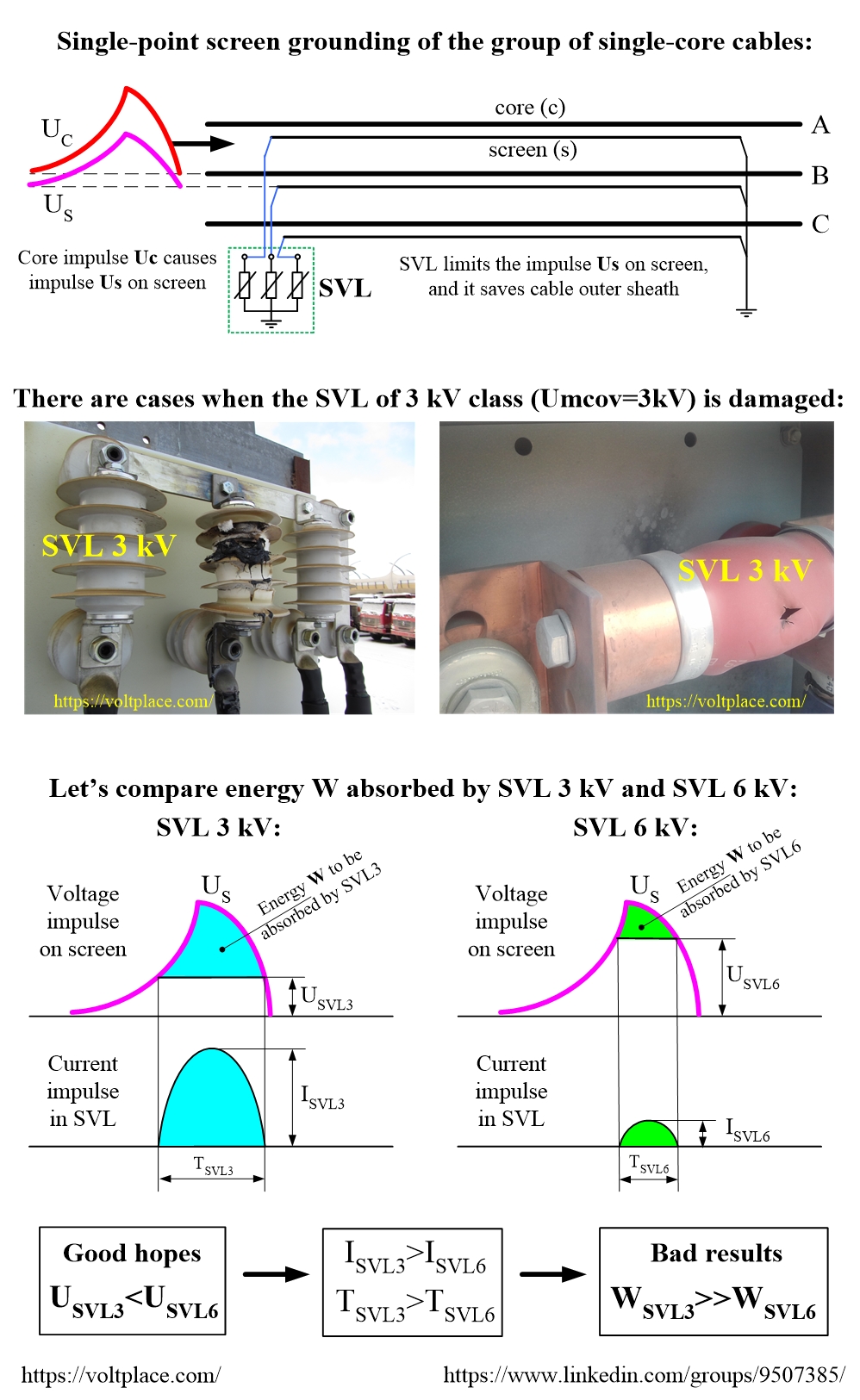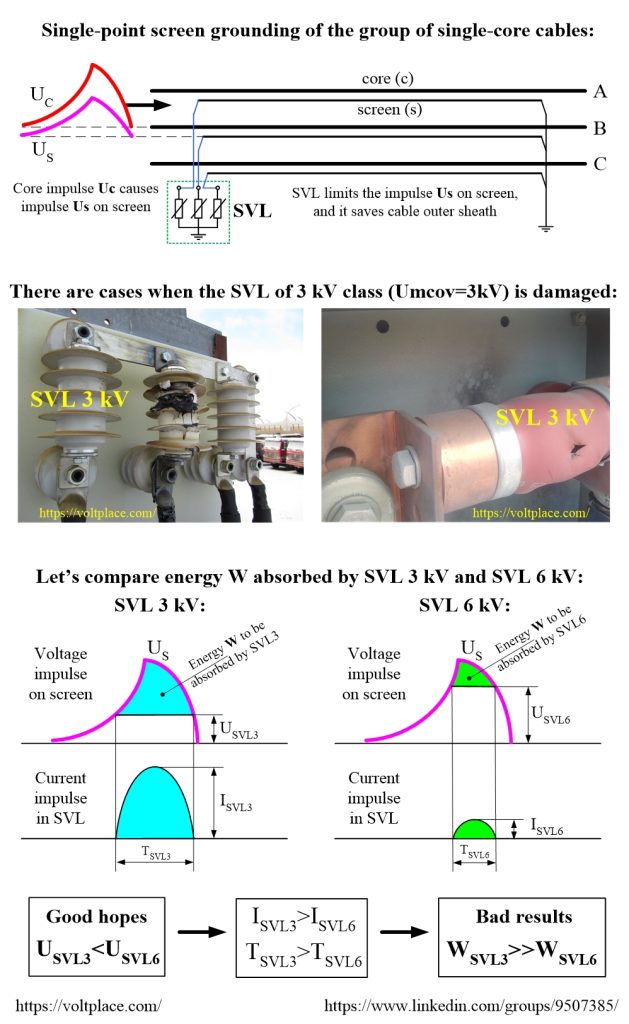
Sheath Voltage Limiters (SVL) and their damages
Single-core cables with XLPE insulation are massively used in 110-500 kV networks. Solid (two-sided) grounding of the screens of such cables leads to negative consequences, and therefore, as a rule, for screens should be used:
✅Single-point grounding (see diagram)
✅Cross-bonding.
In both schemes, voltages may occur on screens relative to the ground caused by interference from the cable core. Cable screens can have:
1️⃣ 50 Hz voltage.
2️⃣ Impulses of lightning/switching nature.
The limitation of 50 Hz voltage on the screen is carried out by a rational choice of the screen grounding scheme. The limitation of impulses on the screens is carried out by placing special surge arresters there, called Sheath Voltage Limiters (SVL). Such SVLs, limiting the voltage on the screen, thereby protect the outer sheath of the cables from breakdowns and subsequent penetration of water into the XLPE insulation.

There are common cases when SVLs of voltage class 3 kV (Umcov = 3 kV) are used. Such SVLs, as expected, will reduce the voltage impulses to those values that are obviously safe for the cable sheath. Unfortunately, the use of such SVLs often ends up damaging them (see photos). Let’s talk about why this might be happening. There are two reasons.
1️⃣ 50 Hz processes. Any SVL does not withstand well an increase in 50 Hz voltage. For example, a typical SVL can withstand a 1.5-fold voltage increase for no more than 0.1 sec (the duration of short-circuit in 110-500 kV grid). Therefore, the SVL 3 kV is able to withstand a 50 Hz voltage increase of no more than 4.5 kV. At the same time, in case of short-circuit in the network outside the cable, voltages of 50 Hz induced on cable screens can reach values of more than 4.5 kV, which leads to damage to the SVL.
2️⃣ Impulse processes. When the SVL is triggered, impulse currents pass through it, energy is released into the SVL, and the SVL heats up. Unfortunately, the ability of the SVL to dissipate impulse energy may be insufficient, and then SVL will overheat and become damaged.
To reduce the likelihood of SVL damage, I would strongly recommend not to use SVL 3 kV for 110-500 kV cable lines. For example, the use of SVL 5-6 kV reduces the risk of damage to the SVL to almost zero.
Someone might say that SVL 5-6 kV will protect the sheath from voltage impulses worse than SVL 3 kV. Although formally such words will be correct, they have almost nothing to do with real life. The fact is that according to experimental data, the 110-500 kV cable sheath is capable of withstanding lightning and switching impulses of up to 100 kV or more. Against this background, even the use of SVL 10-20 kV, even with a poor grounding system and long connecting wires, can perfectly protect the 110-500 kV cable sheath from damage.
Please, use SVL 5-6 kV. This will not worsen the protection of the 110-500 kV cable sheath in any way, but it will significantly increase the reliability of the SVLs themselves.
